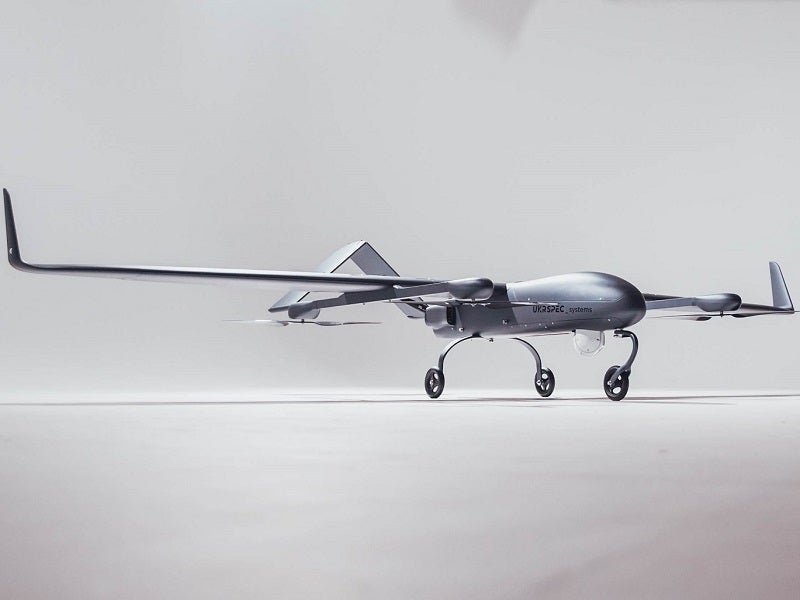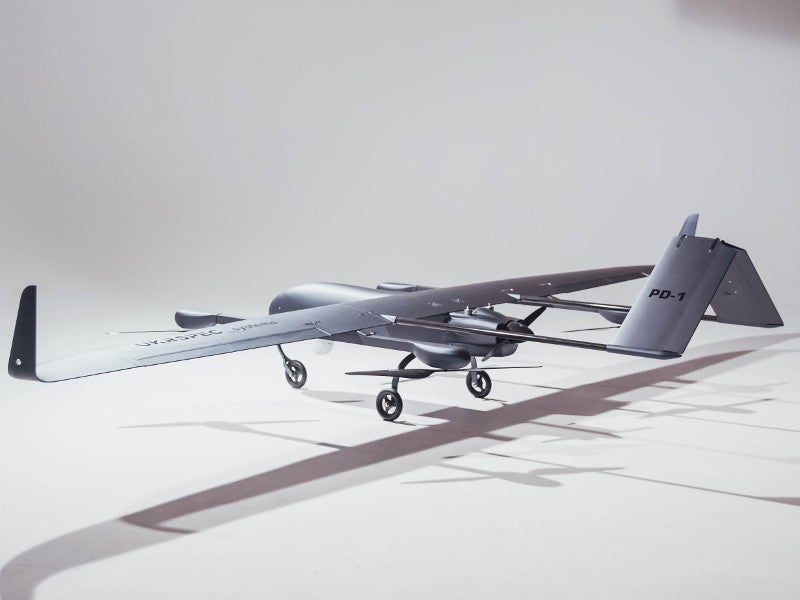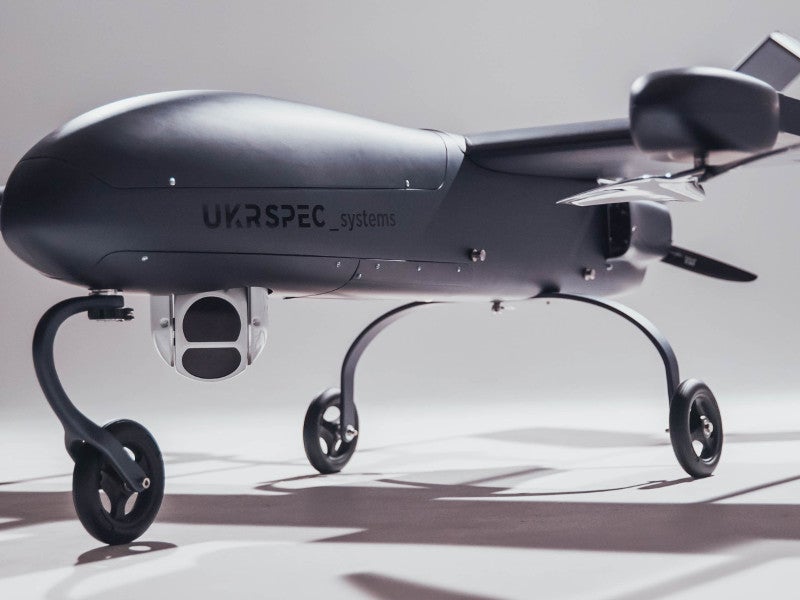PD-1 vertical take-off and landing (VTOL) unmanned aerial system (UAS) is the latest offering of Ukrspecsystems, an unmanned systems manufacturer based in Ukraine.
It is an advanced version and VTOL variant of industry-proven PD-1 UAS, which is currently operational with the Ukrainian Armed Forces.
The VTOL variant was officially introduced in February 2018 and exhibited at the Special Operations Forces (SOF) equipment exhibition Innovation Network Seminar (SOFINS) 2019 held in Bordeaux, France, in March 2019.
PD-1 VTOL unmanned system is intended to address the aerial surveillance requirements of the armed forces of Ukraine.
The single unmanned system unit comprises two PD-1 VTOL fixed-wing drones and a ground control station (GCS). It is capable of performing multiple civil and military applications and can also be deployed for aerial surveillance, artillery fire correction, search-and-rescue (SAR), public safety, agriculture, and aerial photography missions.
PD-1 VTOL UAS design and features
The modular design of the unmanned vehicle supports the integration of multiple payloads. Its open architecture enables operators to transform it into PD-1 drone by detaching the VTOL module. Conversion of normal PD-1 drones is also made easy with the usage of VTOL module. The unmanned system can be customised further based on the mission requirement of users.
PD-1’s airframe offers very low radar signature, which makes it hard to be detected by the enemies. The UAV can also be integrated with artillery software during military applications.
The VTOL capability of the UAV is ensured by the four rotor blades on the two perpendicularly fitted arms on the high-mounted wing configuration. The rotors provide the required lift to perform flight sequences. An additional tail rotor is also placed at the end of the fuselage.
The unmanned system is 2.5m-long and offers a wingspan of approximately 5m. Its modular airframe features a twin-tail configuration with the control structures arranged in V-shape.
The maximum payload carrying capacity of the vehicle is 7kg and the maximum operating altitude is 3,000m. The maximum take-off weight (MTOW) of the vehicle is 45kg.
Payloads
PD-1 UAV can be fitted with a USG-212 EO/IR gimbal that holds a full HD day-view camera with 30X optical zoom, and a thermal camera. It offers digital video stabilisation, keeps a track on enemy targets, and will recognise the coordinates of the target.
The UAS is also compatible to be installed with a USG-211 full HD gimbal, which offers similar capabilities of the USG-212 gimbal. A 36mp gyro stabilised photo camera is fitted onto the UAV to carry out aerial photographic missions effectively.
The spacious payload bay has space to accommodate additional payloads such as a SAR radar, a radio repeater, ISTAR payloads, a cell phone international mobile subscriber identity (IMSI) catcher, and target tracking systems.
PD-1 VTOL UAS communications
PD-1 VTOL UAV offers superior communication capabilities compared to its base version. Real-time visual data gathered by the UAV can be relayed to the control station within 90km.
The unmanned system has encrypted data link range of 95km, while its navigational capabilities are aided by a satellite GPS system. The UAS can be optionally equipped with a satellite data link communication system.
Ground control station (GCS)
The launch and recovery of the unmanned system are fully automatic. The UAV can be launched using a pneumatic catapult mechanism, while the landing can be made using a ballistic parachute recovery system.
Operations of the UAV can be controlled by a ground-based control station (GCS), though it can also be controlled by multiple control stations. Video and intelligence information gathered by the UAV can be relayed to the GCS and used for further analysis. Route maps and flight data can be automatically fed to the UAV from the control station.
Performance of the PD-1 VTOL UAV
PD-1 UAV is powered by a 61cc four-stroke engine integrated with an 80W electric starter-generator system.
The generator system starts the UAV automatically and supplies power to the onboard systems during flight.
The aircraft also features an advanced electronic fuel injection system that increases the endurance level limit by 15%. RPM, temperature, and fuel sensors are also installed onboard to enhance the UAV’s performance.
The UAS can continuously perform operations for more than ten hours, while carrying 7kg of payload and 12l of fuel. The cruise and stall speeds of the UAV are 50km/h and 95km/h respectively, while the operational range is more than 500km.




